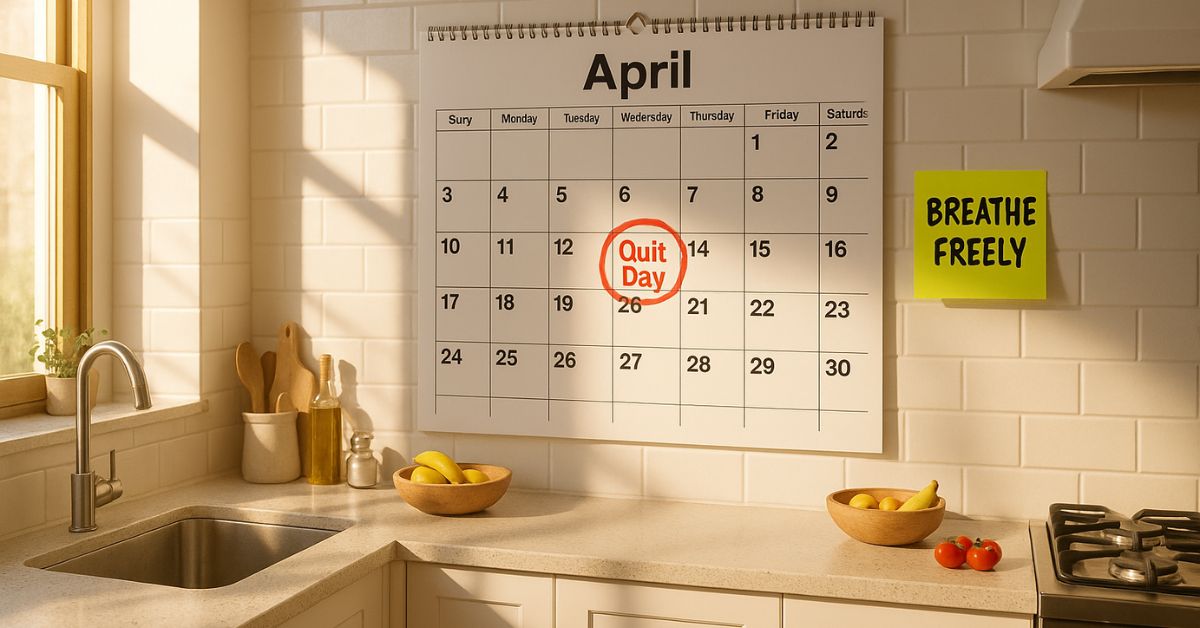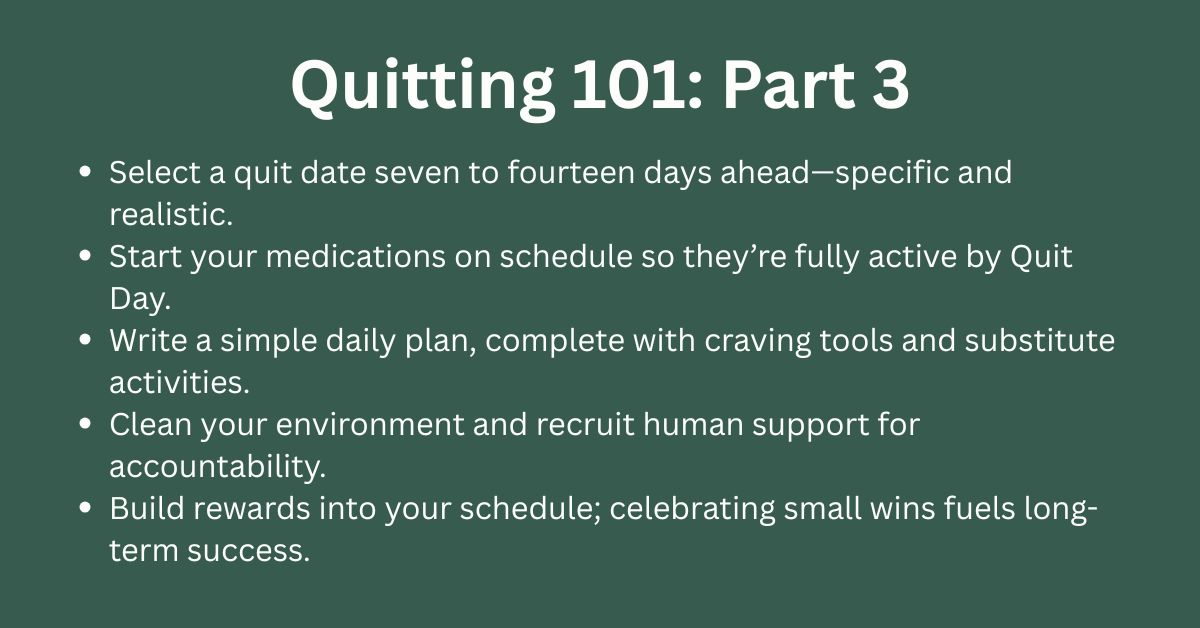
You’ve identified your motivations (Part 1) and mapped your triggers (Part 2). Now comes the commitment that turns good intentions into action: choosing a firm quit date and building a plan you can follow day by day. Think of this step as drawing a line in the sand—and giving yourself the tools to stand behind it.
Aim for a day one to two weeks from now.
Seven to fourteen days gives you long enough to start your quit-smoking medications (varenicline and bupropion often need a week or more to reach full effect) and short enough that procrastination can’t creep in.
Pick a low-stress window
Look at your calendar. Avoid times packed with deadlines, major social events, or travel. Quitting is challenging; delay extra hurdles if you can.
Make it official
Add the quit day to your phone calendar, set a morning reminder labeled “Smoke-Free Starts Today,” and tell at least one supportive person. Saying it out loud moves it from wish to commitment.
• Varenicline – Begin seven days before quit day. Take the pill with food and a full glass of water to cut down nausea.
• Bupropion – Start seven days before quit day. Take one dose in the morning and a second in the late afternoon so it doesn’t interfere with sleep.
• Prazosin – If prescribed for anxiety or vivid dreams, begin the night before quit day. Take at bedtime and rise slowly the next morning to prevent dizziness.
• Ondansetron – Keep tablets on hand for any nausea during the first months. Take a 4 mg dose at the first sign of stomach upset; repeat after four hours if needed.
Put pill alarms in your phone now. When Quit Day arrives, you’ll already be in the groove.
• Swallow your scheduled pills with breakfast.
• Spend sixty seconds on slow, deep breathing—set a calm baseline.
• Swap the cigarette: sip tea, stretch, or write a quick gratitude note.
• Schedule two brief walking breaks—late morning and mid-afternoon—to replace smoke breaks.
• Keep your craving kit close: sugar-free gum, a stress ball, your hydration bottle, and a note listing your top three reasons to quit.
• Finish one full bottle of water before lunch and another before the end of the day.
• Take your second doses (varenicline and bupropion, if prescribed) with dinner.
• Brush teeth or chew gum right after meals to break the “smoke after eating” cue.
• Before bed, use a short guided meditation or stretch instead of a final cigarette.
Print or screenshot this outline and post it where you charge your phone—multiple glances each day reinforce new habits.
Having a rehearsed response beats deciding in the heat of the moment.
Tell two friends, family members, or coworkers your quit date and ask if you can lean on them for quick check-ins over the next few weeks. Join the Qwitly community forum or a local support group to share progress and learn from others. Schedule a video follow-up with your Qwitly clinician for the week after Quit Day; a quick check can catch side-effect issues early and keep motivation high.
• Deep-clean your car and home to remove smoke smells.
• Gather lighters, ashtrays, and spare packs; throw them out or seal them in a box you can’t access easily.
• Stock your kitchen with crunchy snacks, flavored water, and herbal tea.
• Place your “why” note—health, money, family—on the fridge, bathroom mirror, and laptop lid. A cleaner environment reduces cue-induced cravings by almost half.

• Daily: Mark a big X on a wall calendar for each smoke-free day.
• Weekly: Use your cigarette money to treat yourself—movie night, new book, or a fancy coffee.
• Monthly: Put a chunk of your savings toward a larger goal like new workout gear or a weekend trip.
Rewards reinforce progress and remind you that quitting isn’t deprivation; it’s an upgrade.
Your plan is the scaffold that supports you when motivation wobbles. With a solid quit date and daily structure in place, you’re ready for the next phase—Part 4: Building Your Support System and Environment—where we’ll deepen the groundwork you’ve laid today. Stay focused; the smoke-free life you want is getting closer by the day.